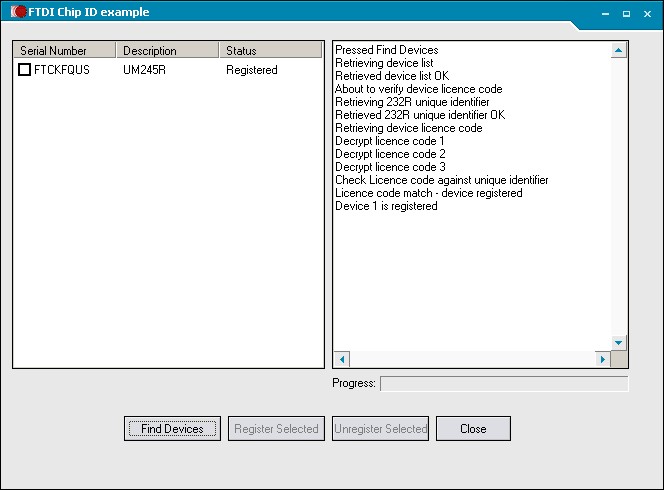In the case of this example, the FTDIChip-ID™ is encrypted 3 times to maintain security at each phase of the registration process. The sequence is as follows:
| · | Extract FTDIChip-ID™ and obtain a date and time stamp from the server, encrypt it and then send it to the server
|
| · | Encrypt a second time and send back to the client application
|
| · | Encrypt the data returned from the server again and program the resulting data into the FT232R/FT245R EEPROM user area
|
To verify the device is registered, the client application decrypts the data from the EEPROM user area and compares the extracted FTDIChip-ID™ with the protected FTDIChip-ID™. If they do not match the device is recognised as not registered.
Please note that the D2XX drivers must be installed on the client PC before this example will work.
The process of registering a device using the example is as follows:
| · | Launch the FTDIChip-ID™ example client application.
|
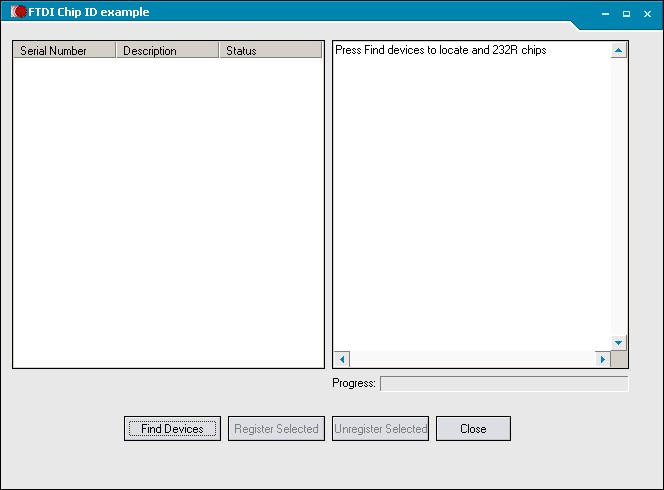
| · | Click Find Devices to list all FT232R and FT245R devices connected to the client PC. The screen below shows one device connected and it is unregistered.
|
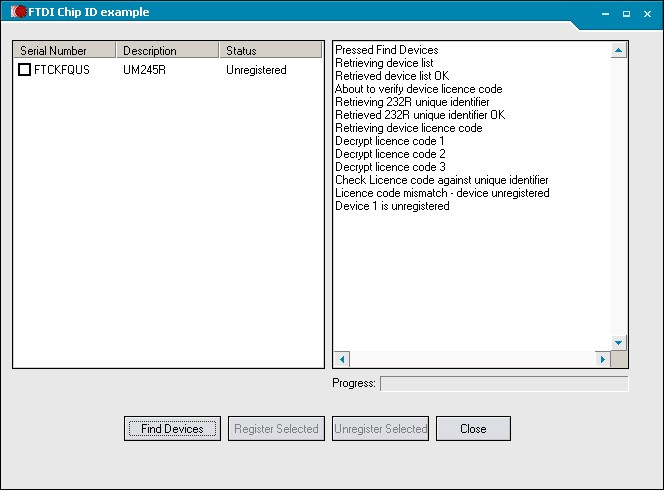
| · | To proceed with registering the device, check the box next to the device serial number, then click Register.
|
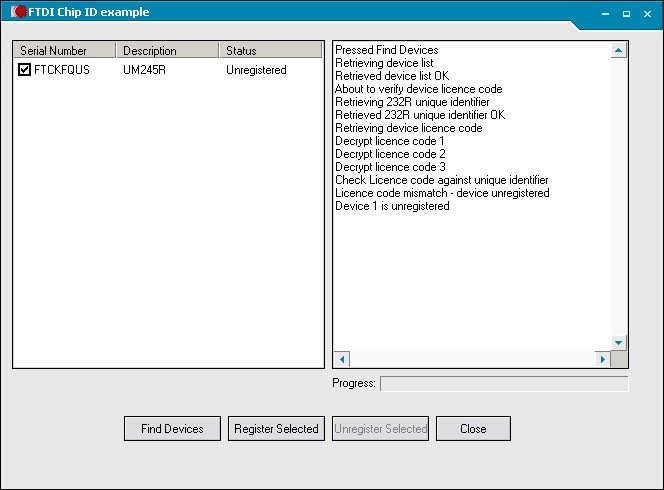
| · | The user is then prompted with a dialog box to provide registration details. These details are held in a database on the server along with the device FTDIChip-ID™.
|
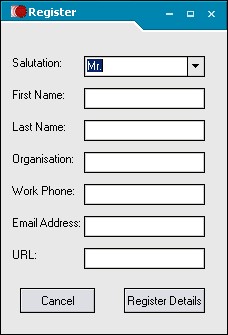
| · | Clicking Register Details, the client application obtains a time and date stamp from the server which is combined with the FTDIChip-ID™, then encrypted and sent to the server. The server stores the registration details, encrypts the registration data again and returns the data to the client application. The client application then encrypts the data a third time and programs the resulting data into the EEPROM user area. This completes the device registration.
|
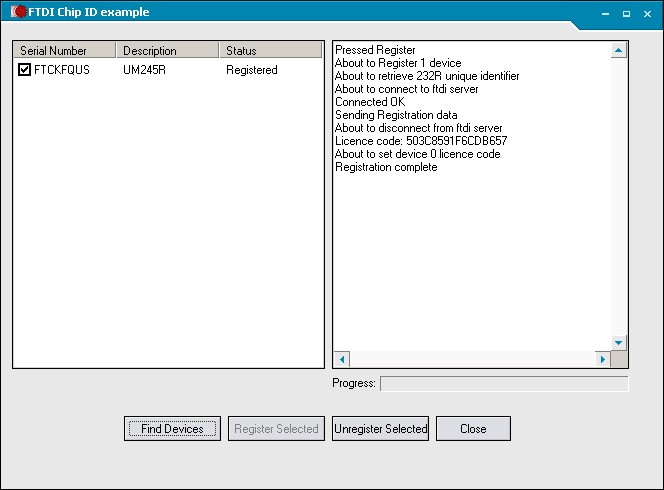
| · | Closing then reopening the application and pressing Find Devices, the device is found and recognised as a registered device. The device can be unregistered at any time by clicking the check box next to the registered device serial number and then clicking Unregister. If the portion of the device user area holding the encrypted data is altered, the decrypted FTDIChip-ID™ will not match the protected FTDIChip-ID™. If they do not match the device is recognised as not registered.
|
